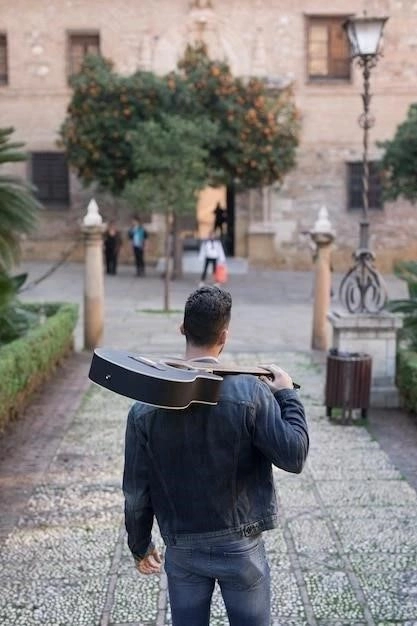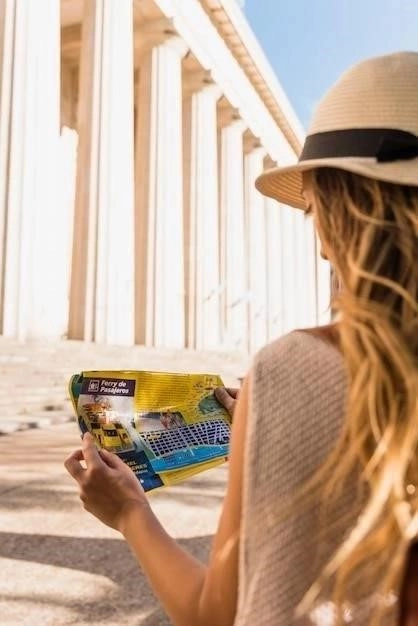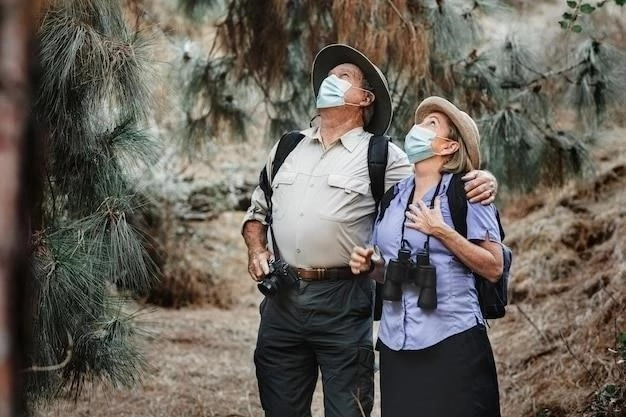Vatican City Travel Guide: A Comprehensive Journey Through History and Spirituality
Embark on an unforgettable journey to Vatican City, the smallest country in the world and the heart of the Catholic Church. This independent city-state, nestled within the heart of Rome, is a treasure trove of art, history, and religious significance.
Planning Your Trip
A well-structured itinerary is essential to maximize your experience in Vatican City, given its compact size and wealth of attractions.
Best Time to Visit:
Vatican City welcomes visitors year-round, but shoulder seasons (spring and fall) offer a balance of pleasant weather and manageable crowds. Summer, while popular, can be crowded and hot. Consider the timing of religious holidays, as these can significantly impact crowd levels.
Visa Requirements:
Vatican City itself doesn’t have a separate visa regime; however, as it is located within Italy, general Schengen visa rules apply. Ensure your passport validity meets Schengen requirements if applicable.

Getting There and Around:
Vatican City is easily accessible from Rome. Public transportation, including the metro (Ottaviano or Cipro stations) and buses, provides convenient access. Within the city-state, walking is the primary mode of transportation due to its small size. Comfortable footwear is recommended.
Tickets and Reservations:
Pre-booking tickets, especially for the Vatican Museums and St. Peter’s Basilica, is highly recommended to avoid long queues, especially during peak seasons. Guided tours can enhance your experience, providing valuable insights and context.
Accommodation:
While Vatican City itself has limited accommodation options, the surrounding Prati district in Rome offers a range of hotels, from budget-friendly to luxurious, providing convenient access to the city-state.
Must-See Attractions Within the Vatican City
Vatican City, despite its diminutive size, boasts a remarkable concentration of art, architecture, and religious significance.
St. Peter’s Basilica:
A masterpiece of Renaissance architecture, St. Peter’s Basilica is a sight to behold. Marvel at Michelangelo’s dome, visit the tomb of St. Peter, and admire the intricate mosaics and sculptures that adorn the interior.
Vatican Museums:
Home to an astonishing collection spanning centuries, the Vatican Museums offer a journey through art history. From ancient Roman sculptures to Renaissance masterpieces, including the Raphael Rooms and the iconic Sistine Chapel, prepare to be captivated.
Sistine Chapel:
Michelangelo’s breathtaking frescoes, particularly the iconic ceiling depicting scenes from the Book of Genesis, are a testament to human artistic achievement. The sheer scale and detail of the artwork are awe-inspiring.
Vatican Gardens:
Escape the crowds and find tranquility amidst the serene Vatican Gardens. Stroll through manicured lawns, admire the fountains and sculptures, and enjoy panoramic views of the city.
Vatican Necropolis:
Located beneath St. Peter’s Basilica, the Vatican Necropolis offers a glimpse into ancient Roman burial practices. It is believed to house the tomb of St. Peter himself, adding to the site’s historical and religious importance.
Exploring St. Peter’s Basilica
A visit to St. Peter’s Basilica is an awe-inspiring experience. Allow ample time to appreciate the grandeur of this architectural masterpiece and its profound religious significance.
Michelangelo’s Dome:
Ascend to the top of Michelangelo’s dome, either by stairs or elevator, for breathtaking panoramic views of Vatican City and Rome. The climb is well worth the effort, offering a unique perspective of the basilica’s architectural splendor.
Pieta:

Marvel at Michelangelo’s poignant Pieta, a masterpiece of Renaissance sculpture, depicting the Virgin Mary cradling the body of Jesus. The delicate details and emotional intensity of the artwork are truly moving.
Papal Tombs:
Explore the numerous papal tombs located within the basilica, each adorned with intricate sculptures and artistry. The tombs of notable popes, including Alexander VII and Pope John Paul II, are particularly noteworthy.
Treasury Museum:
Delve into the Treasury Museum, home to a collection of papal vestments, liturgical objects, and religious art spanning centuries. The museum offers a glimpse into the opulence and artistry associated with the papacy.
St. Peter’s Square:
Upon exiting the basilica, take a moment to admire the grandeur of St. Peter’s Square, designed by Gian Lorenzo Bernini. The square’s iconic colonnades and central obelisk create a sense of awe and wonder.
The Vatican Museums: A Treasure Trove of Art and History
Prepare to be captivated by the sheer scale and magnificence of the Vatican Museums, housing one of the world’s most extensive and impressive art collections.
Map and Itinerary:
Obtain a map upon entry to navigate the vast complex effectively. Consider prioritizing key areas of interest based on your time constraints. A pre-planned itinerary can enhance your experience.
Egyptian Collection:
Journey back in time through the Egyptian Collection, featuring sarcophagi, hieroglyphics, and sculptures from ancient Egypt. The collection offers a glimpse into the art and beliefs of this ancient civilization.
Raphael Rooms:
Admire the frescoes of Raphael, a master of the Italian Renaissance, in the four Raphael Rooms. The School of Athens, with its depiction of renowned philosophers and scientists, is a highlight.
Gallery of Maps:
Stroll through the Gallery of Maps, adorned with intricate maps of Italy dating back to the 16th century. The gallery provides a fascinating insight into the geographical understanding of the time.
Pinacoteca:
Immerse yourself in the world of Italian painting at the Pinacoteca, showcasing masterpieces by artists such as Giotto, Caravaggio, and Leonardo da Vinci.
The Sistine Chapel: Michelangelo’s Masterpiece
The Sistine Chapel stands as a testament to the genius of Michelangelo and a pinnacle of Renaissance art. Prepare to be awestruck by the grandeur and detail of his iconic frescoes.
Ceiling Frescoes:
Gaze upwards to behold Michelangelo’s masterpiece, the ceiling frescoes depicting scenes from the Book of Genesis. From the iconic “Creation of Adam” to the “Last Judgment,” the sheer scale and artistry are breathtaking. Take your time to appreciate the intricate details and symbolism.
Wall Frescoes:
While the ceiling commands attention, don’t overlook the magnificent wall frescoes by artists such as Botticelli, Perugino, and Ghirlandaio. These works depict scenes from the life of Moses and Jesus, complementing Michelangelo’s masterpiece.

Silence and Respect:
Remember that the Sistine Chapel is a sacred space. Maintain silence and a respectful demeanor while inside. Photography is strictly prohibited to preserve the integrity of the artwork.
Guided Tours and Audio Guides:

Enhance your experience with a guided tour or audio guide to gain deeper insights into the history, symbolism, and artistic techniques behind the frescoes.
Crowd Management:
The Sistine Chapel is a popular attraction, so expect crowds. Arriving early in the day or opting for a skip-the-line tour can help mitigate wait times.
Vatican Gardens: A Tranquil Escape
Escape the bustling city and find respite in the serene oasis of the Vatican Gardens, a verdant retreat spanning over half of Vatican City’s territory.
Guided Tours:
Explore the gardens’ hidden treasures and learn about their history and significance through a guided walking tour or an open-air bus tour. Both options provide unique perspectives of the landscape.

Lush Landscapes:
Stroll through meticulously manicured lawns, admire vibrant flowerbeds, and discover secluded groves adorned with ancient trees. The gardens offer a tranquil setting for reflection and appreciation of nature’s beauty.
Fountains and Sculptures:
Encounter exquisite fountains, each with its own unique design and symbolism, adding to the gardens’ charm. Discover hidden sculptures nestled among the foliage, showcasing artistic treasures from various periods.
Vatican Radio Station:
Observe the Vatican Radio Station’s iconic transmission towers, a reminder of the city-state’s global reach and influence.
Panoramic Views:
Reach elevated points within the gardens to enjoy captivating panoramic views of Vatican City, St. Peter’s Basilica, and the surrounding cityscape of Rome. The vistas provide a unique perspective of the area.
Attending Papal Events and Services
Witnessing a papal event or service is a profoundly moving experience for many Catholics and visitors alike.
Papal Audience:
Attend the weekly Papal Audience, typically held on Wednesdays, where the Pope addresses the public with teachings and blessings. Tickets are free but require advance reservation through the Prefecture of the Papal Household or authorized agencies.
Sunday Angelus:
Gather in St. Peter’s Square at noon on Sundays to hear the Pope deliver the Angelus prayer and message from his window overlooking the square. This event draws large crowds, so arrive early for a good vantage point.
Papal Masses:
Witness the solemnity of a Papal Mass, particularly during significant liturgical seasons such as Christmas, Easter, or special occasions. Tickets are often limited and require advance request through your local diocese or embassy.
Official Vatican Website:
Stay updated on papal events and services through the official Vatican website, which provides a schedule and information on obtaining tickets or accessing live broadcasts.
Respectful Attire:

When attending papal events, adhere to the Vatican’s dress code, which requires modest attire covering shoulders and knees for both men and women. This demonstrates respect for the sacred nature of the events.
Vatican City Practical Information
To ensure a smooth and enjoyable visit, familiarize yourself with essential practical information regarding Vatican City.
Currency:
The official currency of Vatican City is the Euro (€). ATMs are available, and major credit cards are widely accepted.
Language:
The official language is Italian, but English and other major languages are widely spoken, particularly within tourist areas and at major attractions.
Time Zone:
Vatican City observes Central European Time (CET), which is one hour ahead of Coordinated Universal Time (UTC+1).
Tourist Information:
Visit the Vatican Tourist Information Office located in St. Peter’s Square for maps, brochures, and assistance with any inquiries you may have during your visit.
Security:
Expect security checkpoints at entrances to Vatican City and its attractions. Bags may be subject to inspection. It’s advisable to pack light and leave valuables in your hotel safe.
Where to Stay Near Vatican City
While Vatican City itself has limited accommodation options, the surrounding areas in Rome offer a wide range of choices to suit various preferences and budgets.
Prati District:
Consider staying in the elegant Prati district, located just north of Vatican City. This upscale neighborhood offers a blend of historic charm, high-end boutiques, and convenient access to Vatican attractions.
Borgo District:
Alternatively, the Borgo district, situated between Vatican City and the Tiber River, offers a quaint and atmospheric setting. This historic neighborhood features charming cobblestone streets and a selection of family-run trattorias.
Hotel Options:
Choose from a range of hotels, from budget-friendly guesthouses to luxurious five-star establishments. Consider factors such as proximity to Vatican City, transportation links, and amenities offered when making your selection.
Booking in Advance:
Especially during peak seasons, it’s highly recommended to book accommodations well in advance to secure your preferred choice and potentially benefit from better rates.
Online Booking Platforms:
Utilize reputable online booking platforms to compare prices, read reviews from fellow travelers, and find accommodations that best suit your needs and budget.
Dining Options Around the Vatican
The area surrounding Vatican City offers a diverse culinary scene, ranging from traditional Roman trattorias to international cuisine, catering to all tastes and budgets.
Traditional Roman Cuisine:
Indulge in authentic Roman dishes such as pasta alla gricia, saltimbocca, and carciofi alla romana at charming trattorias in the Prati or Borgo districts. Seek out establishments frequented by locals for a genuine culinary experience.
Casual Dining:
Numerous cafes and pizzerias offer a quick and casual dining experience. Enjoy a classic Italian pizza, a refreshing gelato, or a cappuccino while soaking up the vibrant atmosphere of the neighborhood.
Fine Dining:
For a more refined dining experience, explore the upscale restaurants in Prati, offering innovative cuisine and elegant settings. Consider making reservations, especially for dinner.
Dietary Considerations:
Most restaurants accommodate dietary restrictions, including vegetarian, vegan, and gluten-free options. Communicate your needs when making a reservation or ordering.
Grocery Stores:
If you prefer to prepare your meals, several grocery stores are within walking distance of Vatican City, offering a variety of fresh produce, pantry staples, and local specialties.
Respecting Vatican City’s Dress Code and Etiquette
Vatican City, as the center of the Catholic Church, holds deep religious significance. Visitors are expected to demonstrate respect through appropriate attire and decorum.

Dress Code:
When visiting Vatican City, particularly St. Peter’s Basilica and the Vatican Museums, a modest dress code is mandatory. This entails covering shoulders and knees for both men and women. Avoid sleeveless tops, shorts, short skirts, and hats inside religious sites.
Silence and Decorum:
Maintain a respectful silence or speak in hushed tones within religious buildings. Refrain from disruptive behavior, such as loud conversations, photography with flash, or touching religious artifacts.
Photography:
While photography is generally permitted in most areas, flash photography is strictly prohibited inside the Sistine Chapel and some other chapels to protect the fragile artwork. Be mindful of signs and instructions regarding photography.
Security Checks:
Expect security checkpoints at entrances to Vatican City and its attractions. Cooperate with security personnel and be prepared for bag inspections. It’s advisable to pack light and leave unnecessary items at your accommodation.
Guided Tours:
Consider joining guided tours, as they often provide insights into the history, art, and religious significance of Vatican City while ensuring respectful conduct within sacred spaces.










